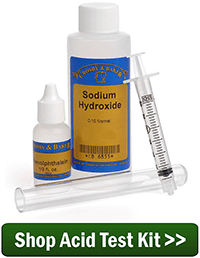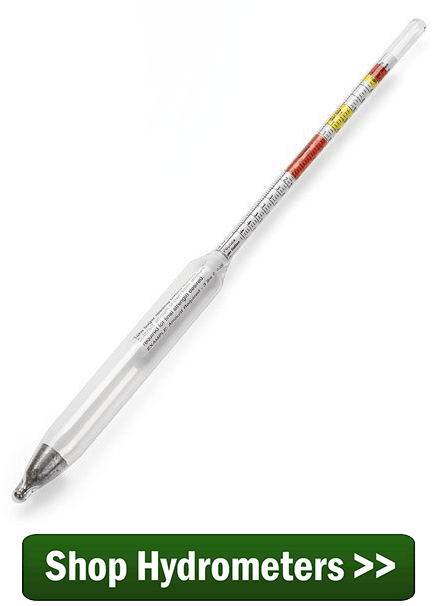 This is the last part of a 4 part series on knowing when to pick your grapes. Part 1 went over the importance of knowing when to harvest. Part 2 covered how to take the readings from the grapes and what they mean. Part 3 went over what kind of readings to expect.
This is the last part of a 4 part series on knowing when to pick your grapes. Part 1 went over the importance of knowing when to harvest. Part 2 covered how to take the readings from the grapes and what they mean. Part 3 went over what kind of readings to expect.
What’s One To Do?
Unless you have some high-dollar real estate in California wine country, it’s not likely you will hit the best Brix, pH and TA readings all at the same time. Some years the climate will just not cooperate, and you will most likely need to make compromises.
Of course, you can get lucky in a particular year with just the right weather at the right time, but counting on getting lucky is a fool’s bet. You must learn to make the optimal best out of the meteorological cards you are being dealt.
A good rule of thumb is to try to harvest when the ratio of Brix to TA is between 31:1 and 34:1. This will always get you a good compromise between alcohol content and tartness.
As an example, lets say you do a titration and discover that the TA is .85% – still a little high – and your refractometers Brix reading is 23. This gives you a Brix to TA ratio of about 27:1. You get this by taking the Brix and dividing it by the TA (23/.85)… not time to harvest.
Two weeks later you take another reading with your titration kit and get a TA of .73% (a little lower) and your refractometers reading says a Brix of 24 (a little higher). These readings get you a ratio of about 33:1… time to harvest.
The only exception to this general rule has to do with pH. If the pH looks like it is going to go out of ideal range, then go ahead and harvest right away. The pH getting out of range trumps the Brix to TA ratio. This means for white wines, if it looks like it’s going to go higher than of pH 3.3. then harvest. For reds, if it goes higher than 3.5, then harvest. 
Proper pH is more important than Brix and TA simply because you can’t directly adjust pH later on without effecting the tartness of the wine, but you can directly adjust Brix and TA without effecting the pH too much.
The Wine Hydrometer
In part one of this four part series I mentioned that a wine hydrometer should be purchased, just as a way of double-checking your refractometers reading before actually picking the grapes.
So it’s late in the season. You’ve been taking all your readings, and all the numbers have finely come into their best alignment, and you have come to the conclusion that its time to harvest. Stop! Now should be the time to take a reading with your hydrometer just as a means of making sure it is time to pick.
To do this you will need to crush up a couple of handfuls of grapes taken randomly throughout the vineyard and extract the juice. You need enough juice to get the hydrometer to float. A hydrometer jar is good in this regard because it is tall and slender and does not require a large amount of grape juice to get the wine hydrometer off the bottom.
 If your hydrometer’s reading taken from grapes throughout the vineyard matches your refractometer’s reading taken from one grape, then you’re ready to harvest. This is when to pick your grapes to make wine. Get to pickin’ and crushin’.
If your hydrometer’s reading taken from grapes throughout the vineyard matches your refractometer’s reading taken from one grape, then you’re ready to harvest. This is when to pick your grapes to make wine. Get to pickin’ and crushin’.
Read More >>
Part I: The Importance Of Timing
Part II: Taking Reading
Part III: What Readings To Expect
Part IV: The Big Compromise
—–
Ed Kraus is a 3rd generation home brewer/winemaker and has been an owner of E. C. Kraus since 1999. He has been helping individuals make better wine and beer for over 25 years.

Hi Ed, my Zinfandel vines have a lot of spiders and cobwebs on them. Can I spray them with a garden hose now/periodically, or should I wait until harvest to submerge them in water to avoid mold, etc.?
I use reusable plastic corks( not the synthetic cork imitators) and wonder if the wine will “age” at all in bottle as do wines corked naturally.
Hi. I’m in the process of harvesting muscadines for winemaking and not sure what to think about the total acidity levels I’m seeing in the grapes. I used the Supreme variety as a test case and tested ph, brix, and TA for green (unripe), ripe and slightly raisined (wrinkled) samples. For the green grape, I got ph 2.6, brix 6.0, TA .93%. For the ripe I got ph 3.0, brix 14.5 and TA .38%. For the shriveled I got ph 3.3, brix 20.2 and TA .30%.
The ph and brix numbers seem in the right range, but the TA numbers seem low. I was suspect of my TA testing method, but benchmarked against a commercial red wine and the TA for that came out at .68%, which seems reasonable. Is there something I’m missing? I crushed the sample grapes and tested the juice. I know the seeds and skins are fairly tart on the muscadine and I’m wondering whether the TA would increase if let to sit and ferment on the seeds/skins. Since I can’t make sense of it, I’m just going to harvest based on PH and Brix, which seem in normal ranges, but was wondering if you had any thoughts.
Thanks!